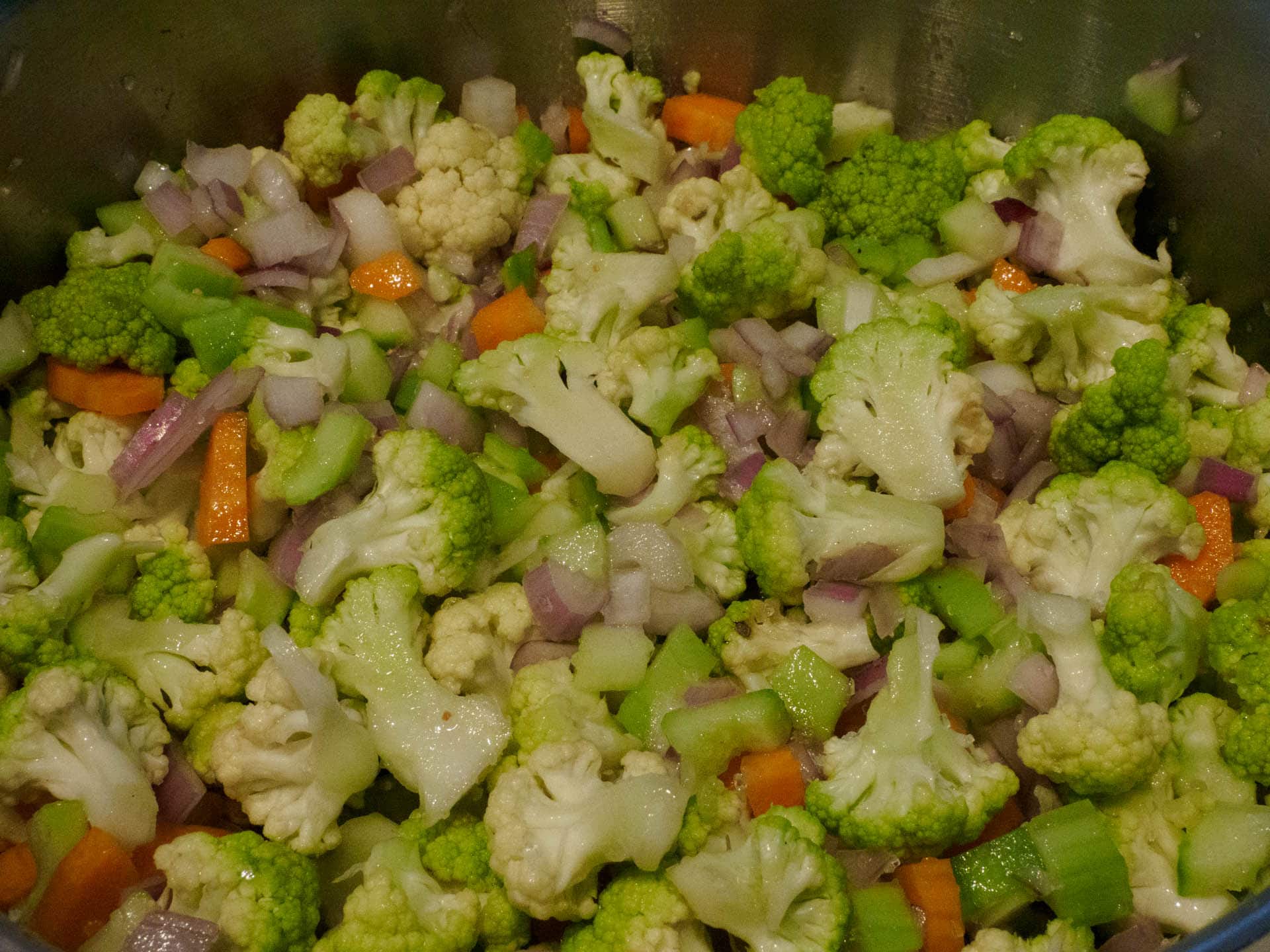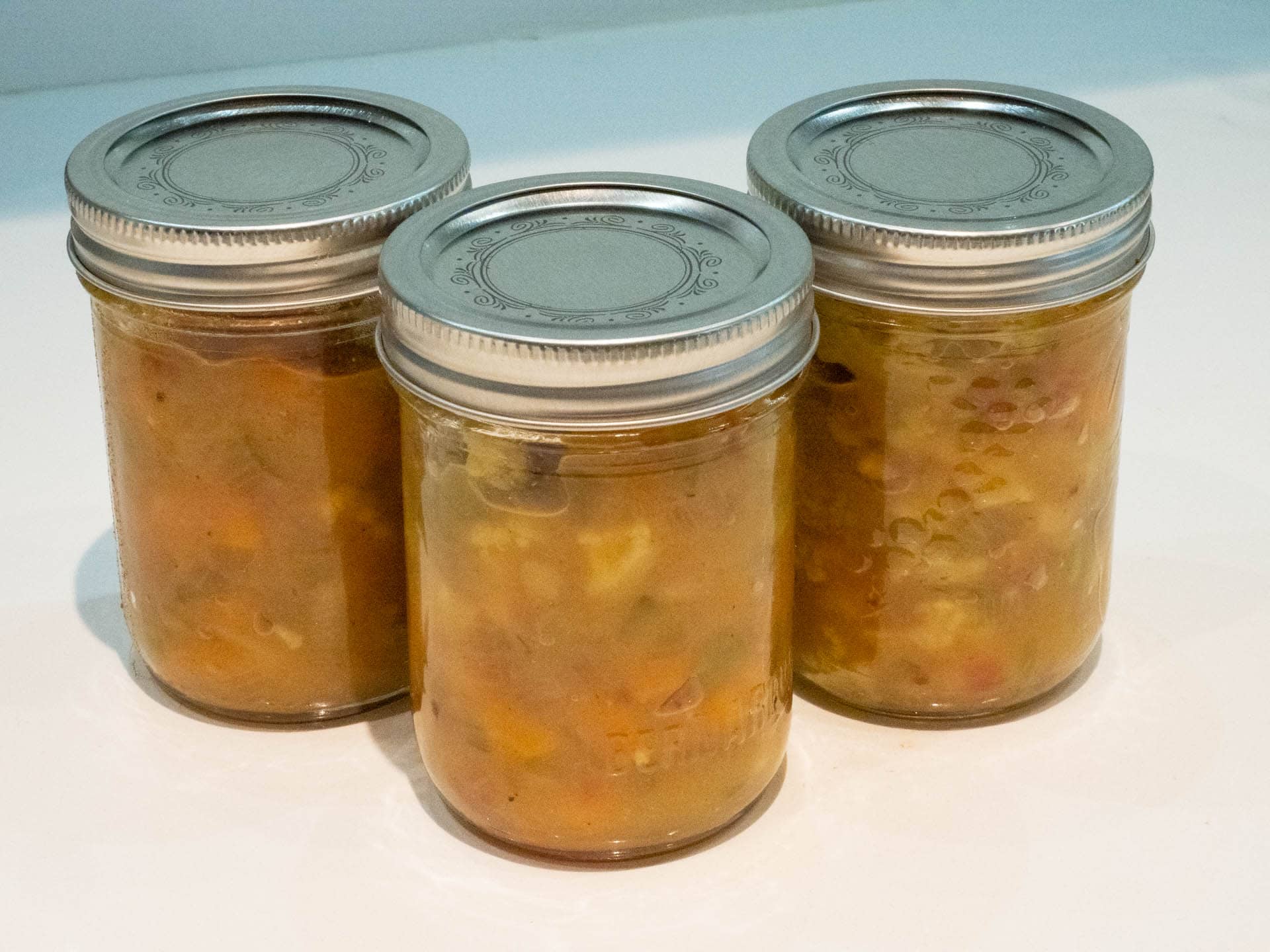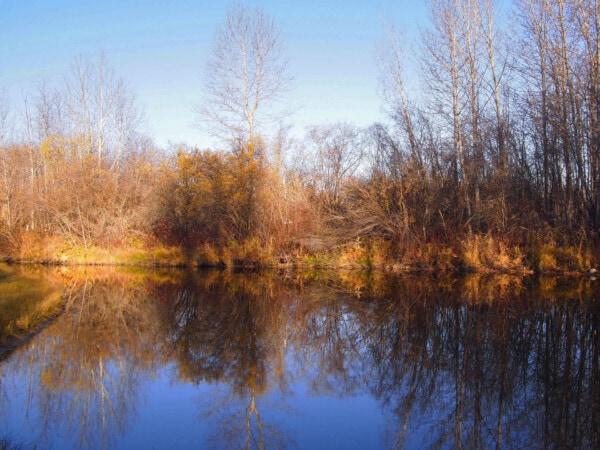Do you know piccalilli? No, I don’t mean Piccadilly, the train station in London. Although I first became acquainted with piccalilli in an English pub in 1982 with Magellan, his parents and Lynn. Smitten, I searched for piccalilli back home, disappointment jarring me for decades. It was hard to find and no matter the brand or price, tasted either alarmingly sweet, teeth-on-edge sour, synthetically adulterated or was a lurid yellow. Then I read Hugh Fearnley-Whittingstall’s recipe for piccalilli online in The Guardian. While “pickle,” as it applies to me, is more “to get into a difficult situation” than “to preserve vegetables,” making Hugh’s recipe has become a favourite autumn tradition—and on the rare occasion, an early start on a Christmas gift for foodie friends.
What is piccalilli, besides a word that’s such fun to say out loud?
Wavering between savoury and sweet, piccalilli is a classic English relish, crunchy fresh vegetables in a piquant mustard sauce, a zesty accompaniment to a Ploughman’s Lunch of farmhouse cheeses, cold cuts, terrines and wedges of thick, crusty sourdough bread. Think of it as Britain’s interpretation of an Indian pickle, tangy with mustard and turmeric that lends the condiment its lively yellow hue. As Hugh Fearnley-Whittingstall writes, piccalilli bursts with “the delectably explosive combinations of the Raj.”
If I were Mrs. Mason Pickler, this recipe would have been posted a few weeks ago. Sorry! But it’s not too late to harvest the last of fresh cauliflower, carrots, onions and cucumber from your garden, or local farmers’ market—well, here in BC anyway.
Advice from a dozen years of making piccalilli.
It’s a two-day process as the vegetables need to salt overnight. Don’t use purple cauliflower—the colour is distorted by the pickling process. Sometimes I use some “green cauliflower,” which is actually Broccolo Romanesco (“Roman broccoli), also called Romanesque cauliflower or simply Romanesco.

Apple-cider vinegar provides a more complex taste; don’t substitute white vinegar. (Or red-wine vinegar as I did one year; it turned the piccalilli light purple.) Chop the vegetables into small pieces; yes, this will take time—but for a half-hour you won’t notice the drizzling rain or early snow, nor worry about Meta or Greta.

Salting the vegetables for 24 hours ensures your piccalilli will be crunchy when it’s cooked. And don’t be afraid of the amount of salt Hugh calls for—it is exact, as you would expect from a man who has authored thirteen cookbooks. However, without a kitchen scale, it can be difficult to calculate “500 g of cauliflower” and “50 grams of fine sea salt” so I’ve provided measurements in cups and tablespoons. (You’re welcome.) Try to find corn flour, for both its taste and yellow colour, rather than subbing all-purpose white.

Use vinegar-proof lids as Hugh specifies; but then, you likely know that. Last year, a box of uniquely shaped jars at a kitchen store caught my eye. Not being Mrs. Mason Pickler, I didn’t know to ask if the lids were vinegar-proof. Mistake! When I opened my piccalilli, the inside of some lids was spotted with black. Magellan and I ate the piccalilli anyway, with no adverse consequences, that we know of, yet. (A bad purchase all round as the jars were too large for standard vinegar-proof lids so I tossed them. What can I say? The world now has more recycled glass.)
Piccalilli
Ingredients
- 5 cups of cauliflower broken into small florets (1/2″ or so)
- 2 cups of thinly chopped onions
- 1 cup of carrots chopped into small pieces
- 1 cup of cucumber peeled, seeded and chopped into small pieces
- 3 1/2 tbsp fine sea salt
- 2 cups apple-cider vinegar
- 1 1/4 cups sugar
- 2 tsp mustard powder
- 1/2 tsp turmeric
- 1/2 tsp ground ginger
- 1/2 tsp ground cumin
- 1/2 tsp yellow mustard seeds
- 1/4 tsp grated nutmeg
- 1 good pinch chilli flakes
- 1 good pinch cayenne pepper
- Freshly ground black pepper
- 2 tbsp corn flour
Instructions
- Put the prepared vegetables into a large bowl, stir in the sea salt , cover with plastic wrap and leave in a cool place for 24 hours.
- The next day, rinse the vegetables and pat dry.
- Heat the vinegar, sugar and spices in a large stainless-steel pot over low heat and stir until the sugar dissolves. Bring to boil.
- Season with pepper. Add the vegetables and bring to a boil again, then reduce the heat and let simmer uncovered for 10 minutes.
- Mix the corn flour with a little of the hot cooking liquid until it makes a smooth paste and add it to the piccalilli mixture.
- Bring to a boil again and simmer for five minutes.
- Transfer to warm, sterilized jars and seal with vinegar-proof lids.
- Wait a month before using; the piccalilli will keep for nine months.

The first record of piccalilli came from Elizabeth Raffald, whose book The Experienced English Housekeeper (1769) gave a recipe for making “Indian Pickle or Piccalillo” that’s similar to modern ones today. In the fifth edition of Art of Cookery, Hannah Glasse included a recipe for “Paco-Lilla,” a ginger-flavoured Indian-style pickle “rolling sauce” constantly topped-up with different vegetables as they came into season, often served with pork pie. Here’s an amusing excerpt from a recipe for “Indian Pickle” published in 1774 in Cookery, and Pastry, as Taught and Practised by Mrs Maciver, Teacher of Those Arts in Edinburgh: “

I don’t know when British pubs began serving piccalilli as part of a Ploughman’s Lunch. Ploughman’s Lunch itself was first mentioned in 1837 in Memoirs of the Life of Sir Walter Scott, the popularity of its simplicity and umami goodness revived in the 1960s because of a national advertising campaign to boost cheese sales following its rationing during WWII. In recent years with the advent of artisan cheesemakers and boutique charcuteries, the Ploughman’s Lunch continues to hold sway. It’s easy to enjoy at home, no long-masked flight to London, narrow-hedged roads to the British countryside and a twenty-percent VAT on your tab. Although with our cheese mafia (The Canadian Dairy Commission) seeking a stunning 8.4% increase in the price of milk, our at-home Ploughman’s Lunch may be a sliver of cheese enhancing a cup of piccalilli.
Hugh suggests waiting a month to let your piccalilli “pickle.” Make it now for a fine lunch in December—whole-grain sourdough bread, assorted slices of ham and sausage and wedges of hard cheeses generously slathered with your very own piccalilli. If you can bear to part with any of this divine condiment, ’tis a Christmas gift that will be warmly received.
Navigation
Fearnley-Whittingstall, Hugh. “Eat it with relish.” The Guardian. October 25, 2008. You can see the original recipe here as well as a few other delightful relishes.
Hugh Fearnley-Whittingstall is a multi-award-winning writer (13 cookbooks) and broadcaster known for his commitment to seasonal, ethically produced food. His book The River Cottage Cookbook won the Glenfiddich Trophy and was an André Simon Food Book of the Year. Hugh, his wife Marie and their four children divide their time between an organic farm in Devon and the city of Bristol. Every recipe of his that I have tried is a winner.










10 Responses
Morning Mrs. Pickler, or Mason Pickler as it may be.
If memory serves me right, 🤔🤔🤔🤔 I recall glass tops, for the wide mouth Mason jars, that sealed with a white rubber seal. Possibly these seals are no longer available but may just eliminate any damage from vinegar oxidation or degradation as the case may be?
Ploughman’s lunch sounds right up my alley, love that style of eating and usually try and consume multiple versions of the same throughout the year, as the weather permits.
Too bad the purchased product is not satisfactory but then again seldom does “Homemade” taken second place to mass produced products of any kind. (In my opinion)
Being a garnish, or relish, I can see many versions of same as the variety of nationalities making this product, may be immeasurable.
Thanks for sharing, very awesome 🧀🍷🍺
There are now lids with a protective coating that prevents acidification so a rubber-sealing jar lids, like our moms used, aren’t required. As you say piccalilli could tart up food from many cultures: pakoras, samosas, tourtieres…home-made or store-bought—even Heinz makes a version of piccalilli!
“tie it in a muflin rag” … wow this brings back memories of dad hanging crab apples in a cheesecloth bag so mom and I could make jelly. Wish we had tried this recipe. Sounds delicious. Maybe next year?
That brings up an interesting observation—I have not seen locally made piccalilli for sale at a farmers’ market, although Oyama Sausage at Granville Island has carried a British piccalilli. (I love that shop but whatever brand of piccalilli I bought from them was disappointing.)
This sounds delicious. I can’t wait to make it! It will be a fantastic addition to our Ploughman’s Lunch tradition.
Thanks Shelagh. Let me know if you like it…
When we were out for breakfast this morning, Dallas read today’s blog and I was instructed to print the recipe as soon as we got home.
Sounds wonderful!
Thanks for sharing this…..
Dallas and Pat
Do as you’re told and I promise you won’t be sorry!
Yum! Might have to try this!
Guaranteed goodness!